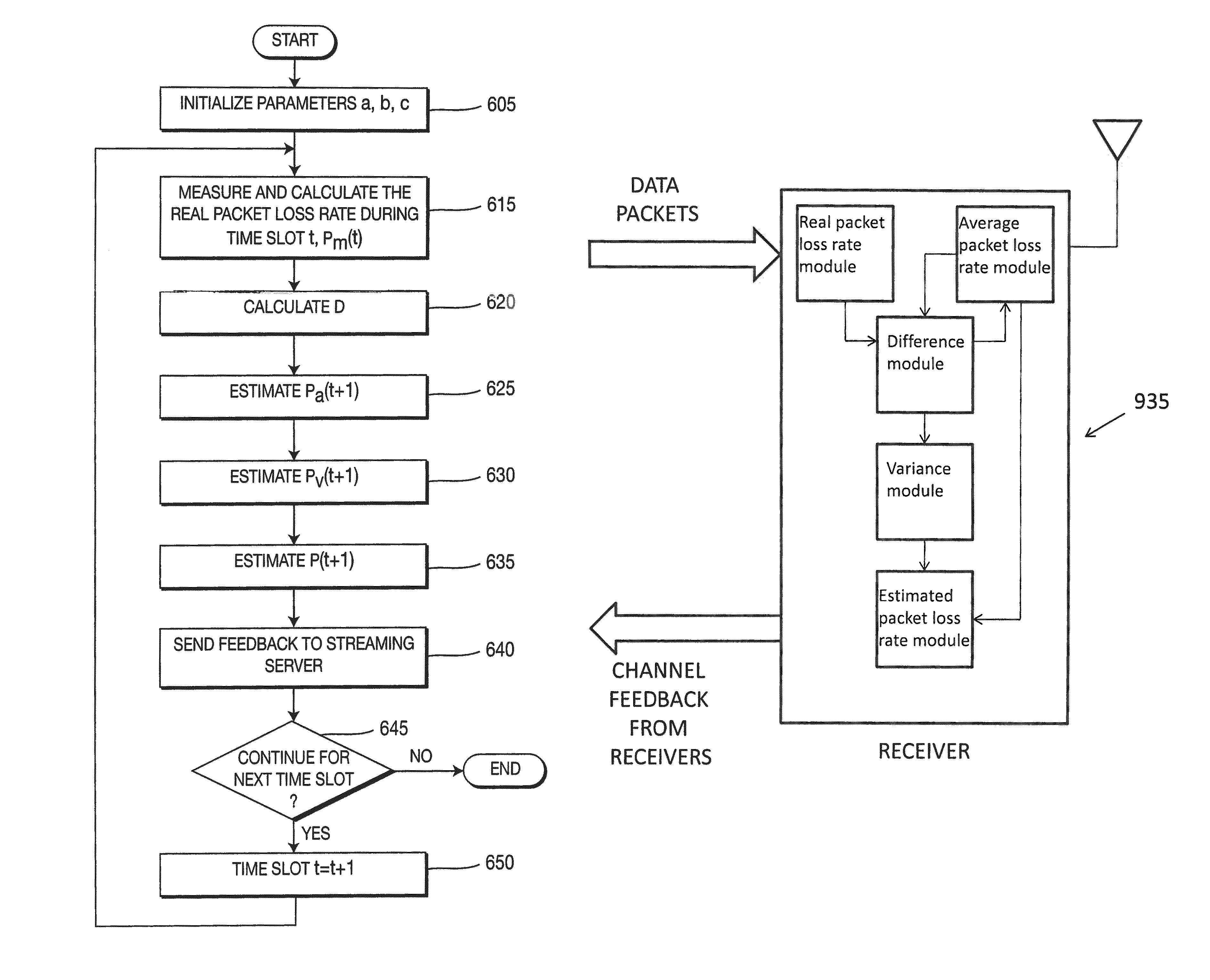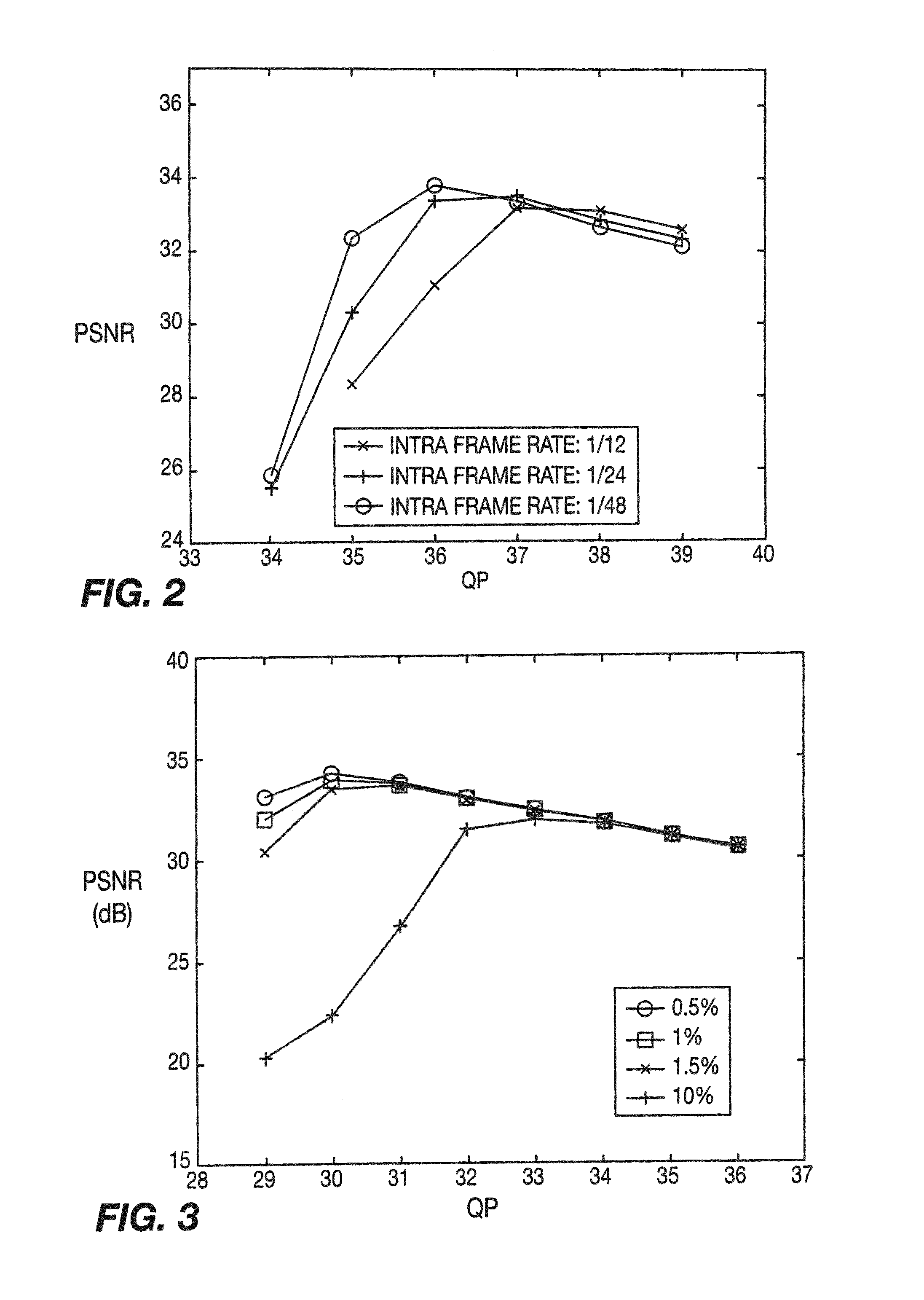Adaptive joint source and channel coding scheme for H.264 video multicasting over wireless networks
a wireless network and joint source technology, applied in the field of wireless network multicasting, can solve the problems of not being applicable or appropriate for multicasting, unable to guarantee the required quality of service to users, and high transmission error rate, so as to improve the overall video quality, improve the overall system performance, and best performance in terms of received video quality
- Summary
- Abstract
- Description
- Claims
- Application Information
AI Technical Summary
Benefits of technology
Problems solved by technology
Method used
Image
Examples
Embodiment Construction
[0026]An exemplary end-to-end architecture for a wireless video multicasting system is shown in FIG. 1. The video servers are connected to the wireless access points (APs) / base stations through, for example, a high-speed Ethernet LAN. The Ethernet LAN is also connected to the Internet through a router or other broadband access mechanism. Stored video contents are transcoded, traffic-shaped and multicast to a number of clients through a wireless network by the video server. Some video servers also equip video capture and encoding cards with which live video contents, fed from cable / satellite set-top boxes or video cameras, are real-time encoded into H.264 format, traffic shaped and multicast to a number of clients. The users can view one or more video programs and simultaneously access the Internet with a wireless device. The present invention can be used for any wireless networks although an IEEE 802.11 WLAN network is used as an example.
[0027]For multicast, the IEEE 802.11 link lay...
PUM
 Login to View More
Login to View More Abstract
Description
Claims
Application Information
 Login to View More
Login to View More - R&D
- Intellectual Property
- Life Sciences
- Materials
- Tech Scout
- Unparalleled Data Quality
- Higher Quality Content
- 60% Fewer Hallucinations
Browse by: Latest US Patents, China's latest patents, Technical Efficacy Thesaurus, Application Domain, Technology Topic, Popular Technical Reports.
© 2025 PatSnap. All rights reserved.Legal|Privacy policy|Modern Slavery Act Transparency Statement|Sitemap|About US| Contact US: help@patsnap.com



